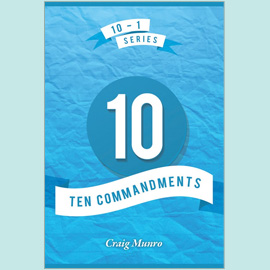OUR VITAL BLOOD SUPPLY
Sometimes we pay attention to our heart beat, our pulse rate, even our blood pressure. If we get a cut or a minor injury we notice that blood flows and then it stops. At other times we are aware of our breathing getting faster after exertion and we sweat, or an indigestion pain indicates something strange happening lower down. But most of the time we do not think very much about the continuous functioning of the different parts of our bodies, unaware of how clever, complex, and carefully designed they really are.
However, the more you learn about these internal organs and their functions, the more you will be amazed at just how clever they are, and how great and wise is their Creator. When David wrote, "I will praise thee; for I am fearfully and wonderfully made" (Ps 139.14), he had taken time to think about this. And from his very limited knowledge, he did what we should do much oftener - give God the glory and the credit for it all. Lift your heart in wonder and in worship!
That wonder only becomes greater and deeper now that so much more has been discovered about anatomy, physiology, and biochemistry. Here we will sketch just a few outlines. For more details with beautiful illustrations to fascinate you, see reference1, or look into a textbook or try an appropriate website (see reference2) . We are fearfully and wonderfully made! - not evolved, not adapted, not here by chance mutations or cosmic accident! "It is he that hath made us, and not we ourselves…be thankful unto him, and bless his name" (Ps 100.3-4).
The heart
Our heart is a marvellously efficient pump which normally lasts for a long time, unlike other pumps which often have to be shut down for repair or maintenance. It is a hollow structure made of muscle which rhythmically contracts and relaxes around 70 times a minute, that is about 100,000 times a day, something like 2,500 million times in a normal lifetime! Four valves open and close in sequence to control the direction of the flow of blood. It weighs only about 300 grams, continuously circulating blood to enable a body of about 70,000 grams to live and function.
It has two main pumping chambers or ventricles, the right ventricle receiving blood through veins from all parts of the body where its oxygen has been depleted, and pumping it through the lungs to be reoxygenated. The left ventricle receives this oxygenated blood from the lungs and pumps it out through various arteries all through the body. The heart has its own separate blood supply without which it could not function. The coronary arteries feed blood to the heart muscles, and the coronary veins collect it in the shortest but perhaps most vital circulation loop in the body. When the heart cannot get blood its muscles cannot work, and if the heart stops, we stop!
The heart responds instantly to demand for more blood from any part of the body which is working harder. The beat can go up to over 200 times per minute and also the volume of blood pumped during each heartbeat can increase. Breathing becomes much faster to supply more oxygen now required by the blood reaching the lungs. Oxygen enriched blood is then distributed through the arteries to reach an ever more branching system of smaller tubes and eventually into very thin walled vessels called capillaries which deliver oxygen and nutrients to cells in every part of the body. Then a similar sequence of capillaries joins up with the major veins to return the blood to the heart. The total length of our blood vessels is calculated to be about 6,000 miles, yes 6,000 miles, the distance form London to Cape Town! Stop again and say, "Marvellous are thy works"! (Ps 139.14).
Blood pumped from the heart will encounter some resistance to its flow through the branching arteries. The pressure developed can be easily measured, and safe limits for blood pressure are well recognised. If some blockage occurs in an artery, or the arteries become stiffer, the effort required to push blood through will have to increase, and the heart will have to work harder. Indeed, elevated blood pressure is an indicator of arterial disease which may potentially cause heart attacks or strokes which prevent blood with its vital oxygen from reaching a key site such as the heart or the brain. It is always worth having blood pressure checked, because detection and prevention is best! God designed and gave us a marvellously functioning heart and blood circulation, and we should do our part in caring for it. Diet, exercise, lifestyle matter!
The blood
"The life of the flesh is in the blood" (Lev 17.11). Written thousands of years ago, these words encapsulated the connection between blood and life long before medical and scientific research showed just how intimate and detailed that connection is. Blood is truly a marvellous fluid, performing numerous tasks which are vital to an organism.
For an adult, the volume of our blood is about 5 litres, that whole amount pumped through the heart every minute while resting. It is composed of plasma (liquid, 56%) and solid particles suspended in it (blood cells or corpuscles, 44%). There are three main types of cells - red cells, white cells, and platelets.
A drop of blood contains about 250 million red cells. Each has a lifetime of about 120 days, so they are continuously renewed (in the bone marrow) at a rate of nearly 3 million per second! Their most important function is to transport oxygen, absorbing it from the lungs and releasing it where needed. Each red cell (erythrocyte) is a wonderfully efficient unit designed for its specific purpose, from its circular disc shape which allows fast diffusion of oxygen, through to the structure of its key protein molecule called haemoglobin. Each haemoglobin molecule (made up of about 10,000 atoms) can bind four oxygen molecules to the four iron atoms in its centre in such a way that they can be reused as often as necessary without breaking any of it up. The detail of the chemistry involved is amazing, as is the whole system!
White blood cells (leucocytes) are different and much fewer. Their function is to monitor and defend the body against foreign materials and "invaders" such as bacteria, viruses, and fungi. White cells recognise these invaders and, in a fascinating manner, some fight against them with an array of "chemical weapons", others then actually absorb and digest them. Millions of white cells die in this process, sacrificing themselves for the benefit of the whole.
Platelets are inactive until a breach in a blood vessel is detected when they accumulate forming a plug to inhibit blood loss. These cells can also break up to release chemical substances which promote blood clotting, just where needed to stop bleeding but not too much or too widespread to inhibit normal circulation. This is another amazingly effective biochemical sequence which operates continuously and even regulates its own activity according to the design of its Creator.
Every protein in this complex sequence on the molecular scale, every component of the blood on the microscopic scale, and every member of the body on the larger scale, are all necessary for the well-being of the whole. Remember the important lesson from this in 1 Corinthians 12 applied to the local church? We all need each other; no member unimportant or superfluous - the hidden ones the most vital. And all must do their part - every joint supplying, every part effectually working (Eph 4.16).
The blood has many other important functions. It controls the body temperature at 37 degrees C and distributes heat throughout. It carries to all parts of the body nutrients derived from food digested in the stomach and intestines and then processed in the liver. It also removes waste products to be filtered out in the kidneys, another amazingly efficient structure. It transports hormones, the chemical messengers of the body (e.g. adrenalin, insulin) to set in motion other processes when and where necessary. "The life of [all] the flesh is in the blood."
The blood of Christ
What blood is to us physically, the precious blood of Christ is to us spiritually and eternally: without partaking of His blood by faith we have no life in us (Jn 6.53); without the shedding of His blood there is no remission of sins (Heb 9.22), no cleansing from sin (1 Jn 1.7). We are justified by His blood (Rom 5.9); made near to God by His blood (Eph 2.13). We are in the very heart of God. What a marvel of divine purpose and a miracle of divine grace that is! Lift your heart again in wonder and worship!
To be continued.
1 W Gitt. The Wonder of Man;CLV Germany, 1999.
2 www.kidshealth.org or www.fi.edu.org









